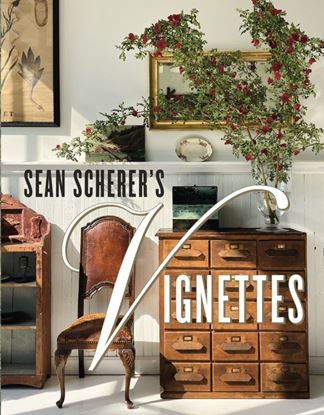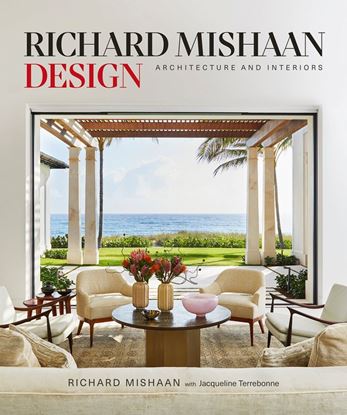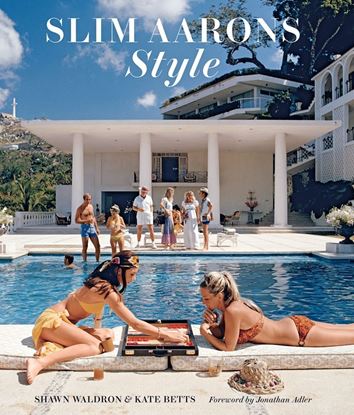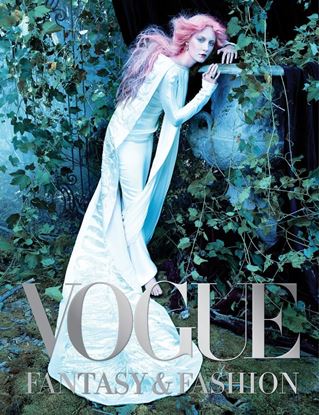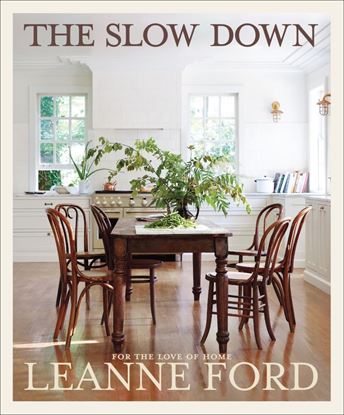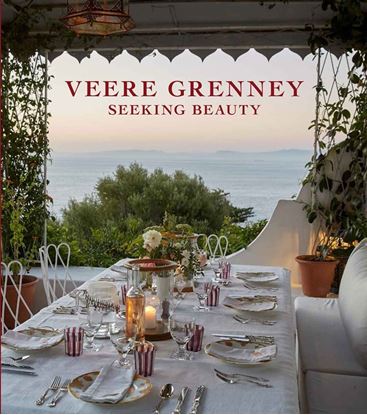

YVES SAINT LAURENT: GOLD
This stunning book presents the couture, jewelry, and accessories inspired by the golds of Yves Saint Laurent from the 1960s to the 2000s.
Gold has been featured heavily throughout the entirety of the designer’s work: from the very first buttons adorning his pea coats to dresses that appear entirely fashioned from gold, no collection escaped the couturier’s “golden” touch. “I love gold," Saint Laurent said. "It’s a magical color; when reflecting a woman, it’s the color of the sun.”
As the official catalogue of the Gold, les ors d’Yves Saint Laurent exhibition in Paris, this keepsake volume presents Saint Laurent’s exquisite designs as we follow the thread of gold throughout his collections, offering special insight into the work and intricate techniques used to make the brocades, laces, lamés, leathers, and embroideries of YSL shine.
3,500
SEAN SCHERERS VIGNETTES
How do you make your home come alive with personality, charm, and memory? In the introduction to Sean Scherer’s first book, Kabinett & Kammer: Creating Authentic Interiors, Anderson Cooper writes, “Scherer has a unique ability to place otherwise ordinary objects in a completely unexpected context or grouping and in so doing change the way you see them.”
In Sean Scherer’s Vignettes, Scherer focuses in on the art of combining common objects into aesthetically pleasing groupings, or vignettes. Contending that a vignette can set the whole mood and tone of a room, he shows you how to use any surface in your home, from a tabletop to a bookshelf to a wall, to create lively displays of your favorite items. Beautifully illustrated with Scherer’s own photographs, the book demonstrates how to balance color, texture, and shape, and provides lessons on how to create both symmetrical and asymmetrical vignettes.
2,995
RICHARD MISHAAN DESIGN ARCHITECTURE
Richard Mishaan is renowned for his masterly integration of textiles, palettes rich in complementary shades, natural materials forged by artisans, surfaces bedecked with talismanic curios, a strategic sense of when and where to place a mirror, and a deep knowledge of both the fine and decorative arts. His many influences, including his upbringing in Colombia, coupled with his idiosyncratic perspective, explain why his sophisticated clientele return repeatedly as their lives evolve.
In Richard Mishaan Design, his working methods are revealed in projects as varied as the conversion of a 400-year-old barn in the Hamptons into a warm, inviting family home and the transformation of an ultra-modern, glass-walled New York City apartment into a comfortable yet sophisticated aerie. Here too are show houses, which he uses as experimental laboratories, working out such diverse design ideas as updating legendary designer Renzo Mongiardino’s aesthetic and achieving a chic look on a tight budget. He has also designed rooms in bespoke hotels, ranging from the Rat Pack–influenced Shelborne South Beach in Miami to the Tcherassi, a renovated 250-year-old mansion in Cartagena, Colombia.
4,800
SLIM AARONS: STYLE
Slim Aarons: Style showcases the photographs that both recorded and influenced the luminaries of the fashion world. This collectible volume features luscious early black-and-white fashion photography, as well as color portraits of the fashionable elite—like Jacqueline de Ribes, C.Z. Guest, Nan Kempner, and Marisa Berenson—and those that designed the clothes, such as Oscar de la Renta, Emilio Pucci, Mary McFadden, and Lilly Pulitzer.
Featuring a number of never-before-seen images and detailed captions written by fashion historians, Slim Aarons: Style is a collection of the photographer’s most stylish work.
Slim Aarons, at least according to the man himself, did not photograph fashion: “I didn’t do fashion. I did the people in their clothes that became the fashion.” But despite what he claimed, Aarons’s work is indelibly tied to fashion. Aarons’s incredibly influential photographs of high society and socialites being unambiguously themselves are still a source of inspiration for modern day style icons.
This coffee table book is perfect for sharing, displaying, and gifting.
5,800
VOGUE: FANTASY & FASHION
Lavishly illustrated, this gift-ready coffee table book celebrates the magazine’s strong and deeply rooted tradition of storytelling through magical, narrative portfolios.
Fashion’s greatest power is its ability to make people dream; to create new worlds. Whether falling down a rabbit hole, conquering new digital frontiers, or exploring the limits of surrealism, the heroines who feature in photographs by great talents like Annie Leibovitz, Steven Meisel, Irving Penn, and Steven Klein are writing their own tales, defining their own destinies.
Featuring well-known images as well as unexpected gems from the archive, Vogue: Fantasy & Fashion documents fashion at its most magical and affirms its transformative power.
Immerse yourself in the enchanting world of Vogue: Fantasy & Fashion, where every page is a testament to the transformative power of fashion and its ability to inspire dreams.
6,800
THE SLOW DOWN
Leanne Ford’s imperfectly perfect designs inspire more than half a million social media fans daily. In this very personal design book, she shares her decorating philosophy, wry humor, and advice to live by.
The Slow Down offers readers an inside look at how Leanne found her “wow does this need work” dream house and then moved (with her family in tow) across the country to turn it into a welcoming home. Her story has a rebellious soul that is refreshingly different from other interior design books: She encourages readers to slow down in their personal environments and celebrate the beauty of everyday moments.
The Slow Down’s photos and narrative present a home tour like no other, stopping to recount crazy ideas (not always crazy!) and to offer thoughts on what makes a design really good and why Elsie De Wolfe is still right (about most things).
You will come away with a new perspective and new ideas on how to make your home more joyful, elevated, and funky, fun, and just right.
3,500
VEERE GRENNEY: SEEKING BEAUTY
World-renowned interior visionary Veere Grenney takes us on an in-depth tour of his impressive residences in Tangier; Suffolk, England; and, for the first time, his new London home.
The book begins with his beloved Tangerine villa—a decade-long labor of love and must-see for all garden enthusiasts, completed with the help of friend and expert in wild garden design Umberto Pasti and a regency gazebo designed by architect Cosimo Sesti. Next, we visit the Temple, his 18th-century Suffolk “pocket Palladian” set within the parkland of Tendring Hall and with views of the fishing lake and geranium-filled garden. Grenney called this picturesque sanctuary home for much of 2020. Finally, with exclusive photographs and annotations, Grenney opens the doors for the very first time to his brand-new London home.
4,995
ARCHITECTS OF COMMUNITY
Passionate about designing buildings and neighborhoods that quietly transform the urban environment, Torti Gallas is committed to improving cities, towns, and distressed communities throughout the United States and around the world. This fully illustrated book shows how they have combined the disciplines of architecture, planning, and urban design into a single practice, creating housing and mixed-use buildings that bring catalytic change to urban neighborhoods: the mixed-use apartment buildings, rowhouses, and single-family homes that comprise the fabric of a city. Their work hearkens back to a tradition that, before World War II, created some of the country’s finest neighborhoods, including Forest Hill Gardens in Queens, Rittenhouse Square in Philadelphia, and Russian Hill in San Francisco. Featuring 60 built projects, this book shows how Torti Gallas is dedicated to raising the level of this architecture to a new high.
3,995
DISEÑO DE MARCAS. SEXTA EDICION
Tanto si es jefe de proyecto de renovación de la marca de su empresa como si necesita enseñar a sus empleados o alumnos los conceptos básicos de la creación de una marca, Diseño de marcas es el recurso definitivo. La sexta edición se ha actualizado a conciencia para abordar los retos profesionales actuales de la creación de marcas. Desde la investigación hasta la estrategia de marca, la ejecución del diseño, el lanzamiento y la gobernanza, Diseño de marcas es un compendio de herramientas y prácticas adecuadas que desmitifican, inspiran y proporcionan una hoja de ruta para crear marcas sostenibles y exitosas.
2,450
EL LIBRO DEL DISEÑO
Una visión fascinante de los movimientos del diseño, que muestra cómo comenzó cada uno y describe su filosofía y estilo visual. El diseño está presente en todo lo que hacemos y fabricamos. Ha dado forma a nuestro mundo desde tiempos inmemorialesy sigue haciéndolo. El diseño es algo complejo: se cruza con el arte,la arquitectura, la publicidad y la artesanía, pero conserva su propiaintegridad. Es, en esencia, lo que da forma y encanto a los objetos funcionalesy un tono a la forma en que nos expresamos como individuos o empresas.
2,500


